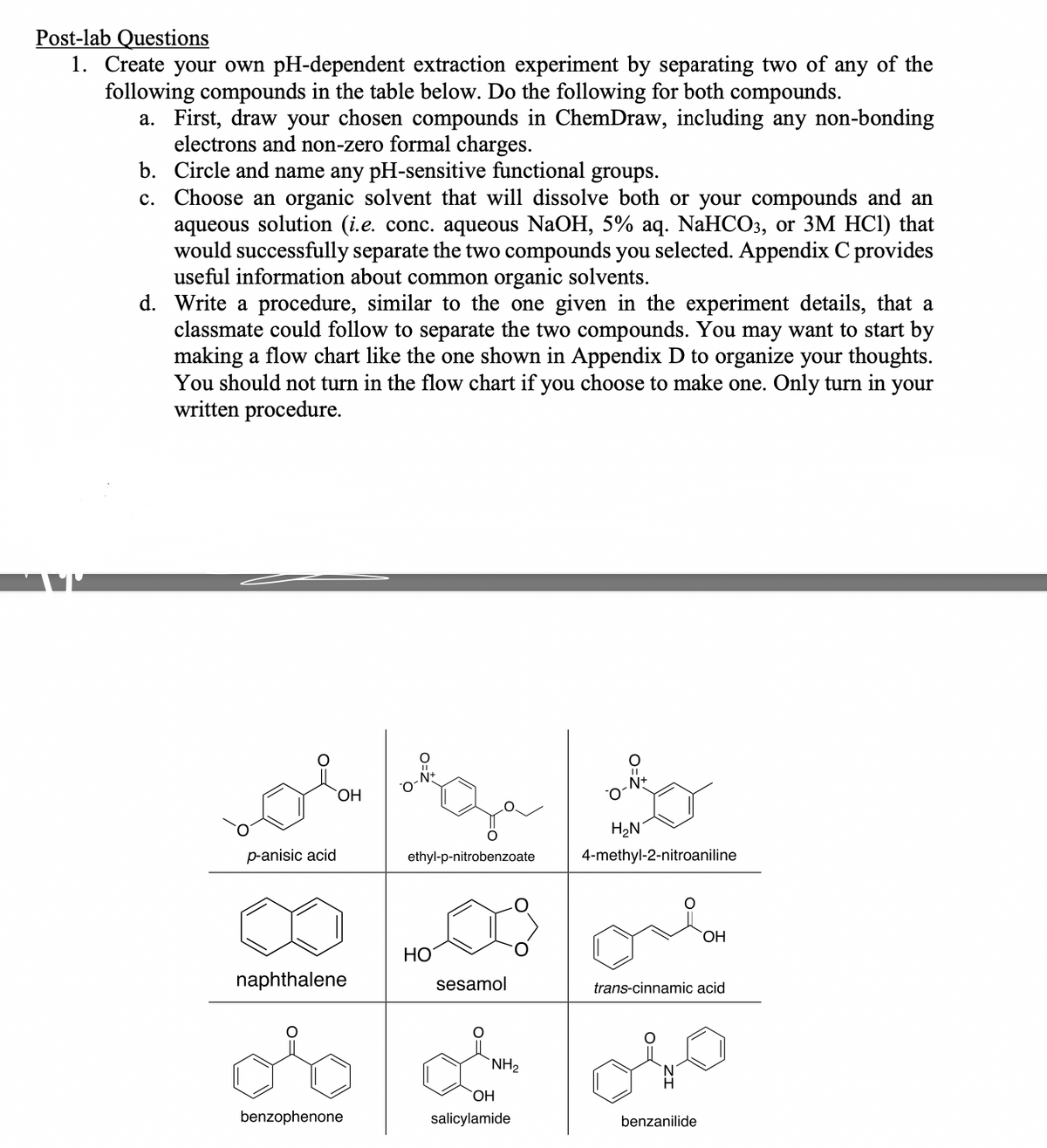Create your own pH-dependent extraction experiment by separating two of any of the following compounds in the table below. Do the following for both compounds.
Create your own pH-dependent extraction experiment by separating two of any of the following compounds in the table below. Do the following for both compounds.
Organic Chemistry: A Guided Inquiry
2nd Edition
ISBN:9780618974122
Author:Andrei Straumanis
Publisher:Andrei Straumanis
ChapterNW4: Nomenclature Worksheet 4: Carbonyl Compounds
Section: Chapter Questions
Problem 3CTQ
Related questions
Question

Transcribed Image Text:Post-lab Questions
1. Create your own pH-dependent extraction experiment by separating two of any of the
following compounds in the table below. Do the following for both compounds.
a. First, draw your chosen compounds in ChemDraw, including any non-bonding
electrons and non-zero formal charges.
b. Circle and name any pH-sensitive functional groups.
c.
Choose an organic solvent that will dissolve both or your compounds and an
aqueous solution (i.e. conc. aqueous NaOH, 5% aq. NaHCO3, or 3M HCl) that
would successfully separate the two compounds you selected. Appendix C provides
useful information about common organic solvents.
d. Write a procedure, similar to the one given in the experiment details, that a
classmate could follow to separate the two compounds. You may want to start by
making a flow chart like the one shown in Appendix D to organize your thoughts.
You should not turn in the flow chart if you choose to make one. Only turn in your
written procedure.
O=
p-anisic acid
OH
naphthalene
benzophenone
-N+
ethyl-p-nitrobenzoate
HO
sesamol
NH₂
OH
salicylamide
||
_N+
H₂N
4-methyl-2-nitroaniline
OH
trans-cinnamic acid
benzanilide
Expert Solution
This question has been solved!
Explore an expertly crafted, step-by-step solution for a thorough understanding of key concepts.
This is a popular solution!
Trending now
This is a popular solution!
Step by step
Solved in 4 steps with 5 images

Knowledge Booster
Learn more about
Need a deep-dive on the concept behind this application? Look no further. Learn more about this topic, chemistry and related others by exploring similar questions and additional content below.Recommended textbooks for you

Organic Chemistry: A Guided Inquiry
Chemistry
ISBN:
9780618974122
Author:
Andrei Straumanis
Publisher:
Cengage Learning

Organic Chemistry: A Guided Inquiry
Chemistry
ISBN:
9780618974122
Author:
Andrei Straumanis
Publisher:
Cengage Learning